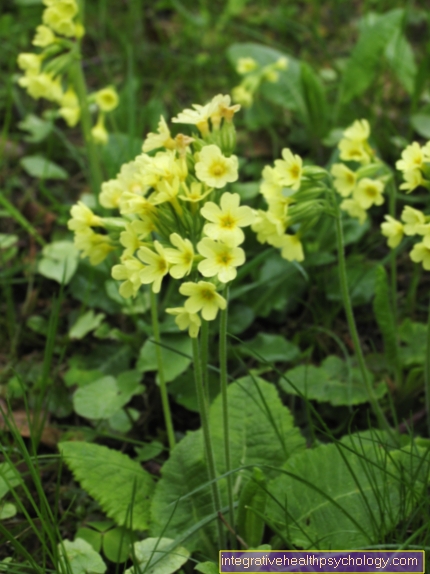mallow
Latin name
Malva silvestris
Common names
Johannispappel, Rosspappel, Swellwort
Plant description
The mallow can be recognized by its branchy, rough-haired stem. she owns bluish to pinkish red flowers, 5 petals, which are provided with three dark vertical stripes.
Heyday. June to August
Occurrence: Widespread in Europe in sunny places.
Plant parts used medicinally
Mainly the blossoms, but also that whole flowering herb the mallow is used to make medicinal products. It is dried in the shade in an airy place.
The so-called "small mallow" is mainly used. The big, red mallow or hibiscus with the large flowers has other active ingredients and is not native to us.
Ingredients
- Plenty of phlegm
- little essential oil
- Tannins
Medicinal effect and application
Mallow has a soothing and enveloping effect and is a component of many teas against to cough. It alleviates Inflammation of the mouth and throat.
preparation
Mallow tea: 2 heaped teaspoons cut herbs (with flowers) are poured over with a large cup of cold water.
You can take off for about 10 hours and then strain. The extract is heated to drinking temperature and as Cough tea easy with Honey sweetened.
Combination with other medicinal plants
One can make a cough tea made from equal parts of mallow herb and Cowslip root produce.
2 teaspoons of it are included ¼ l of boiling water poured over, you let it 1Draw for 0 minutes and strains. You can sweeten it with honey a cup three times a day enjoy this tea.
Side effects
So far, none are known to have been consumed by mallow.





























